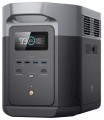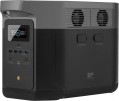USB A (quick charge)
Full size
USB A ports with fast charging support. It allows you to charge your smartphone, tablet or other connected device much faster. The charging process takes place at increased power, and the current and voltage at each stage are regulated in such a way as to remain within the optimal values. However, it should be borne in mind that in our time there are many fast charging technologies and not all of them are compatible with each other.
- The strength of the current. The parameters of the current issued through the USB A fast charging connectors. Note that different voltage and current parameters can be output to different ports of the charging station. This item specifies the current values at a certain voltage (for example, 5 V / 3 A, 9 V / 2 A, 12 V / 1.5 A).
— Power. The maximum power in watts (W) that the charging station is capable of delivering through the USB A fast charging connector to one charging device. High output power allows you to speed up the charging process. However, the appropriate power must be supported by the device being charged - otherwise the speed of the process will be limited by the characteristics of the gadget.
Battery type
—
Li-Ion. The key advantage of lithium-ion batteries is their high capacity with small dimensions and weight. Also, Li-Ion batteries are not subject to memory effect and can charge quite quickly. Of course, this option is not without its drawbacks - first of all, it is sensitivity to low or elevated temperatures, and if overloaded, the lithium-ion battery can catch fire or even explode. However, thanks to the use of built-in controllers, the likelihood of such “accidents” is extremely low and, in general, the advantages of this technology significantly outweigh the disadvantages.
—
Li-Pol. An improved version of lithium-ion technology (see the corresponding paragraph): the liquid electrolyte in Li-Pol batteries is replaced with a solid polymer. At the same high capacity, the batteries have become more compact, there is practically no “memory effect” in them, and the likelihood of fires and explosions in the event of critical violations of operating conditions is minimized. The downside of these improvements was increased cost and increased sensitivity to frost. However, most often these shortcomings are not significant.
—
LiFePO4. Lithium iron phosphate batteries are a modification of lithium ion batteries (see corresponding paragraph) designed to eliminate some of the shortcomings of the original technology. LiFePO4 batteries are characterized by a
...large number of charge/discharge cycles, chemical and thermal stability, low temperature tolerance, short charging time (including high currents) and safety in operation. The likelihood of an “explosion” of a LiFePO4 battery when overloaded is reduced to almost zero, and in general, such batteries cope with high peak loads without problems and maintain the operating voltage almost until discharge.
— Li-Ion NMC. A type of lithium rechargeable battery using a complex alloy in the manufacture of the cathode. It contains nickel, manganese and cadmium. This “recipe” allows you to increase the power of a power source based on Li-Ion NMC elements. Batteries of this type have a high specific capacity and a stable discharge voltage, provide a long operating time of the charging station with high performance, are characterized by a complete absence of “memory effect”, maintain functionality over a wide temperature range and are fireproof.
— VRLA. Acid batteries with a regulating safety valve to release excess gas. The abbreviation VRLA stands for Valve Regulated Lead Acid. Batteries of this type have a sealed, non-separable design and come in two types: AGM VRLA (the battery plates are equipped with a layer of fiberglass absorbent) and GEL VRLA (with a gel electrolyte in a jelly-like state). Batteries with a control valve are resistant to deep discharges, do not require topping up with distillate throughout their entire service life, and do not emit hydrogen or oxygen.
- Semi-solid State. An advanced type of lithium-ion battery (see above), which combines some of the characteristics of liquid and solid batteries. It uses an electrolyte that is in a semi-soft or gel-like state, making the batteries more resistant to leakage than traditional wet batteries. Semi-solid state technology allows for a significant increase in the energy density of cells. As a result, it is possible to make compact batteries with high energy intensity.Battery capacity
Nominal
battery capacity, in fact - the amount of energy that is supposed to be stored. The larger it is, the longer the battery life of the charging station will be, all other things being equal. On the other hand, this parameter also affects the dimensions, weight and price of the battery, despite the fact that an energy-intensive battery is not always required. By the indicator of capacity in watt-hours, you can compare batteries with each other.
Charging cycles
The number of charge-discharge cycles that the battery can withstand without significant loss of performance.
In the process of operation, the batteries wear out, which causes their performance to suffer (in the first place, the capacity decreases). Battery life is usually measured in charge-discharge cycles. However, models with the same declared resource are not always equally durable in practice. Different manufacturers may interpret “significant loss of performance” in different ways: for example, one brand indicates the resource up to a 20% decrease in capacity (DOD > 80%), another - up to a 60% decrease (DOD > 40%) Behind the abbreviation DOD worth decoding Depth of Discharge, i.e. discharge depth. Therefore, when choosing, it makes sense to focus not only on pure numbers, but also on other sources - test results, reviews, etc. Also note that battery life can be noticeably reduced if the operating conditions are violated (for example, in case of overheating or hypothermia).
Charging time (socket) ≈
Time to charge the portable power station from a fully discharged state to 100% charge when using the power adapter from a household outlet. This refers to the original battery and standard charger.
Charging time (socket + solar panel) ≈
The parameter allows you to estimate the approximate battery charging time in the mode of combined connection of a portable power station - from a power outlet and a solar panel overnight. This method of replenishing energy reserves allows you to speed up the charging process.
Charging time (solar panel) ≈
Time spent on a full charge when using the original panel in bright sunlight. In cloudy weather, the charging time of the device from the solar panel can be strikingly different downwards.
Charging power (socket)
The power at which, in normal mode, the portable power station is charged from a household outlet when using the original power supply.
Charging power (solar panel)
The power in watts provided when charging a device from a solar panel.
The higher the charging power, all other things being equal, the less time it will take to replenish the energy reserves in the cells of the device's own battery. This section provides the maximum power value that the charging station can accept. Accordingly, this indicator is supposed to be taken into account when choosing compatible solar panels.

